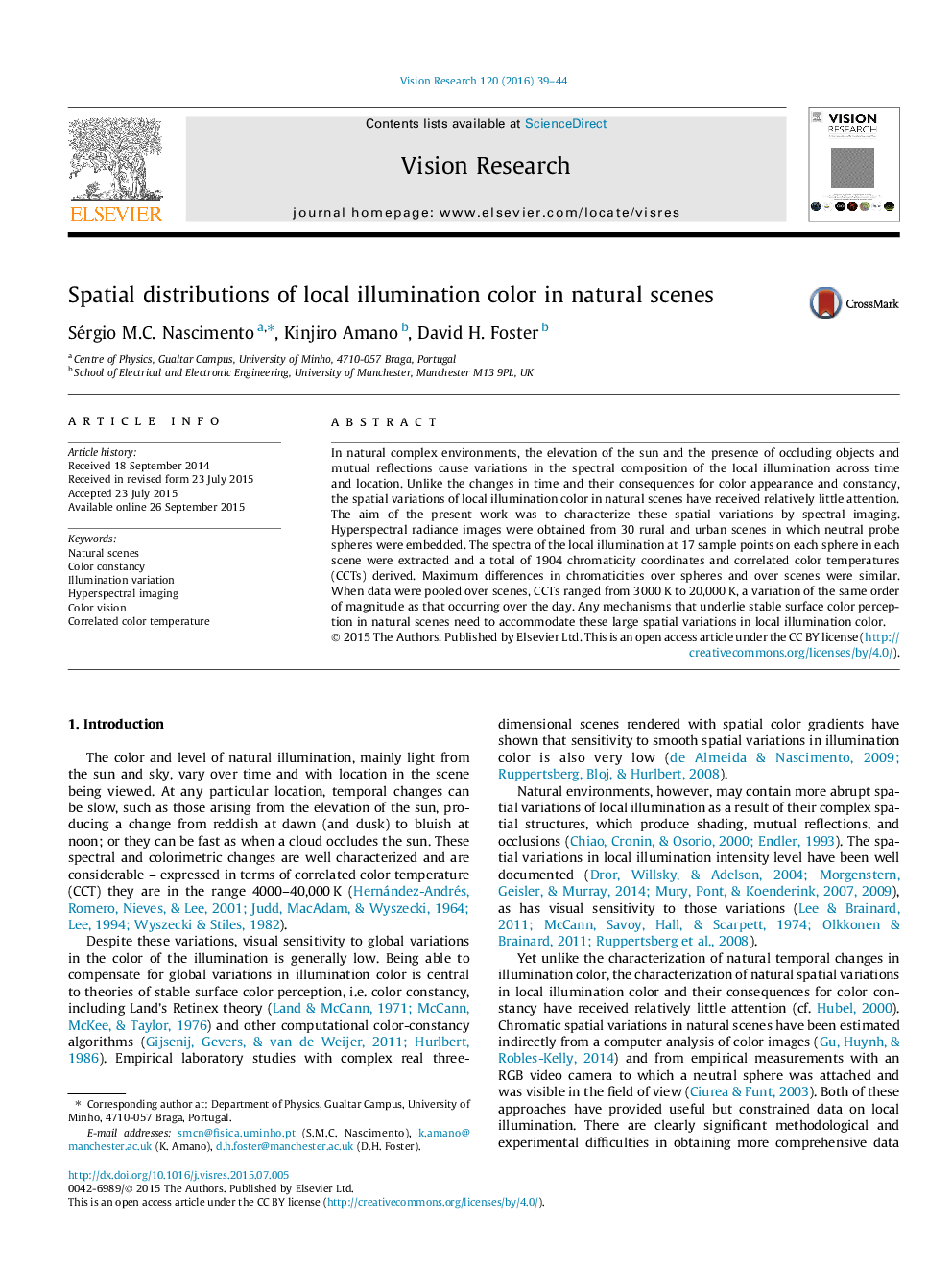| Article ID | Journal | Published Year | Pages | File Type |
|---|---|---|---|---|
| 6202960 | Vision Research | 2016 | 6 Pages |
â¢Local illuminant spectra characterized at 1904 points in 30 natural scenes.â¢Correlated color temperatures 3000-20,000 K within scenes, similar to range over day.â¢Challenges for visual mechanisms giving stable simultaneous surface color perception.
In natural complex environments, the elevation of the sun and the presence of occluding objects and mutual reflections cause variations in the spectral composition of the local illumination across time and location. Unlike the changes in time and their consequences for color appearance and constancy, the spatial variations of local illumination color in natural scenes have received relatively little attention. The aim of the present work was to characterize these spatial variations by spectral imaging. Hyperspectral radiance images were obtained from 30 rural and urban scenes in which neutral probe spheres were embedded. The spectra of the local illumination at 17 sample points on each sphere in each scene were extracted and a total of 1904 chromaticity coordinates and correlated color temperatures (CCTs) derived. Maximum differences in chromaticities over spheres and over scenes were similar. When data were pooled over scenes, CCTs ranged from 3000Â K to 20,000Â K, a variation of the same order of magnitude as that occurring over the day. Any mechanisms that underlie stable surface color perception in natural scenes need to accommodate these large spatial variations in local illumination color.
